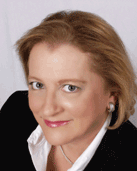By: Brenda J. Trainor
In the movie Sex and the City, Carrie, the lead character, has an emotional lament about getting a new number for her cell phone – she needs it to have the “right” area code! Somehow, prestige is associated with geography, and area codes are part of that prestige – the right set of numbers indicates that you are “cool.”
But no longer do area codes clearly define a neighborhood, in fact, area codes are simply a sorting mechanism, and they are regulated by a big bureaucratic system known as NANPA (the North American Numbering Plan Administration). And the state agency that gets to make the decisions about these things locally is the California Public Utilities Commission (CPUC). And believe me, a new area code can be controversial – people don’t like change very much, that means lawyers and hearings and lawsuits. Honest, I’m not making this up, and I’m not saying that big bureaucratic systems are bad – they just have a beauty known by very few – and now you can be one among them.
The beauty of the NANPA plan is that it makes our telephone system work very well. Living in LA, we know the importance of being connected to our phones; after all, how many of us have a Bluetooth in our ear as we drive down the freeway and get actually get our work done while commuting? The NANPA system assures that the phone system doesn’t send your call to Long Beach instead of Van Nuys even if the same seven digit number might exist in both neighborhoods. Because those two neighborhoods have different area codes, and because your phone knows its originating location when it connects to the dial tone, the system routes the call to the right place. A phone is identified by its three-digit area code, and then by its three-digit prefix and then by the remaining four-digits. It is the three-digit prefix after the area code that helps define how far away a call might be – a toll call is shorter than long distance, but it is not typically included in your free local calling area.
The amount of phone numbers is based on NANPA’s ability to assign numbers for whatever is left over after the area code and prefix. With all the phone numbers each of us has (landline and mobile for home, office, fax, cell, and individual phones for each member of the family), we might get to the point where there are more phone numbers than people. In fact, the CPUC has estimated that by the end of 2009, they won’t have any more numbers to give out in the 818 area code. So, because we are so technologically advanced and popular, we lose the luxury of the seven-digit phone number: soon we will all need to dial 10 digit numbers.
The CPUC has decided that in October of 2008, the LA region will get a new “overlay” area code: 747 will cover the same geographic region as the current 818 area code, an area that largely encompasses the San Fernando Valley – from Thousand Oaks to Pacoima to western portions of Pasadena. New numbers that are issued in this area will receive a 747 area code, and all phone calls (even those to old 818 numbers) will need to be dialed with the area code first. You’ll need to dial 10 numbers now, not just seven. And, from your landline phone, you’ll probably first have to dial 1 as well.
What else do you need to do? It means you probably need to reprogram the automatic dialing numbers on all your phone systems and your computers if you send text messages. For your business, it means you need to be sure that your switch is properly updated as well, because if your office is now in the 818 area code, you will need to start dialing 818 before all numbers. You’ll probably want to send out a message to your staff, especially the receptionist, to be sure everyone understands how to make phone calls in the overlay zone. And, if you don’t already have your area code on all your printed material, be sure to add that to all your stationery, website contact information, advertisements, business cards, tv spots… everything!
And there is good news for your bottom line – your bills shouldn’t change. Dialing the new area code will not automatically mean that you have made a toll call or a long-distance call. The same rate areas are in effect and don’t change with the overlay area code. But be sure to check with your long distance carrier, especially if you have an alternative carrier that might not be based in California or aware of the new overlay code – and check your first bill when it comes in after October to sure there are no programming errors.
There will be a transition period – if you forget to dial the 818 or 747 area code first, your call will still get through – but just between now and April 2009; after April, your call will not go through unless you first dial the area code. Just think “10 digits is  cool”; it means you’re in a popular area. And in LA, it is all about being popular, isn’t it? cool”; it means you’re in a popular area. And in LA, it is all about being popular, isn’t it?
Trainor is the president of Frontier Trail, Inc. a Monrovia based consultancy.
She can be reached at Trainor@FrontierTrail.com.

|